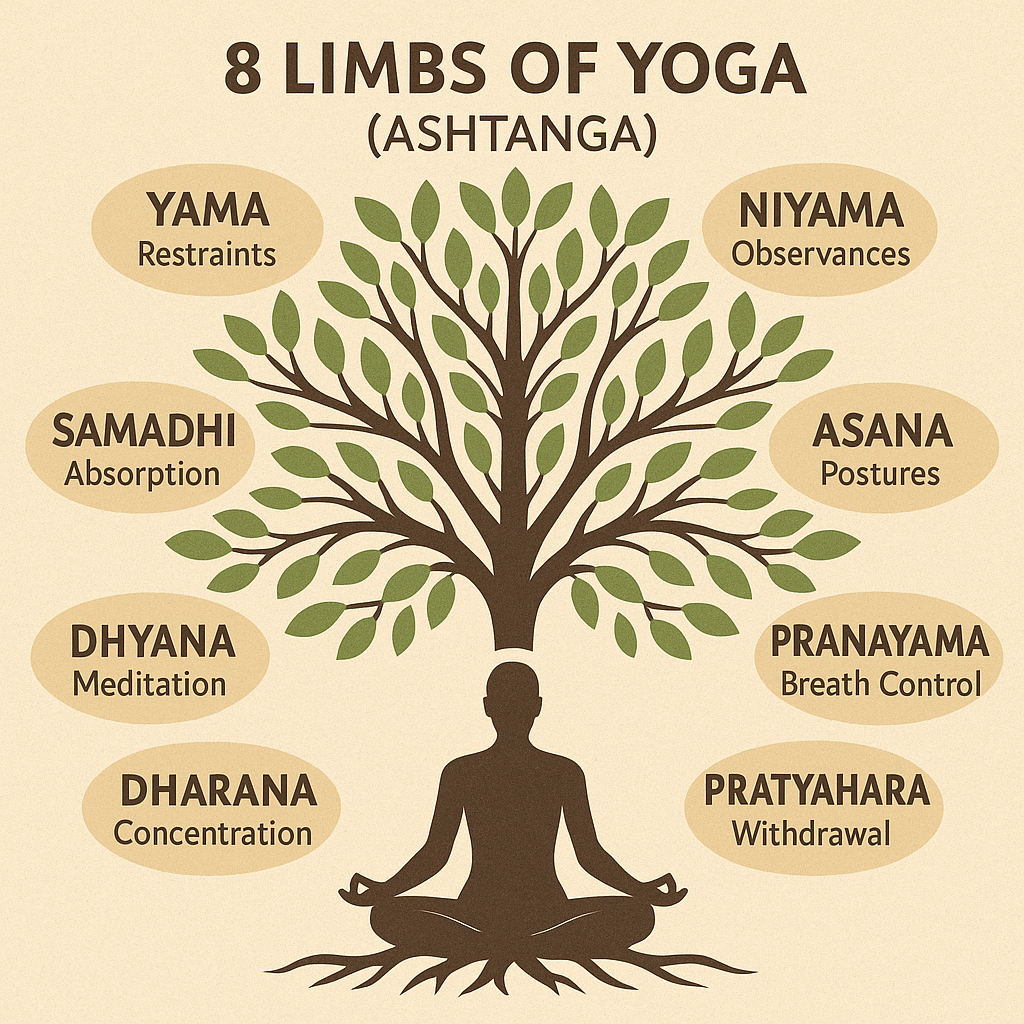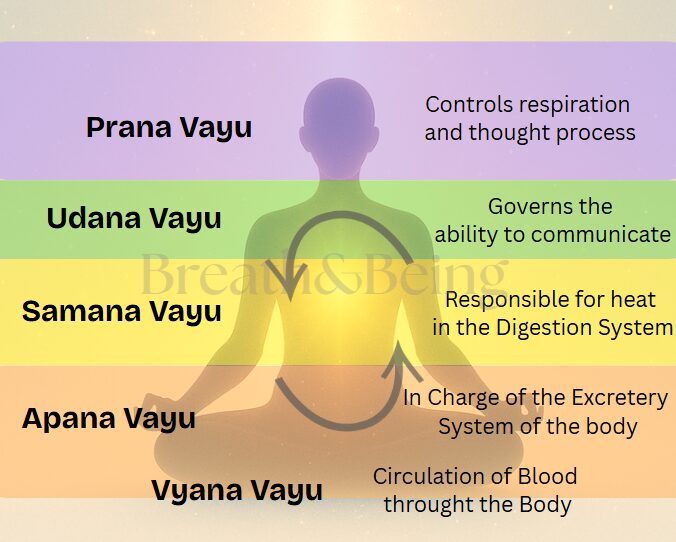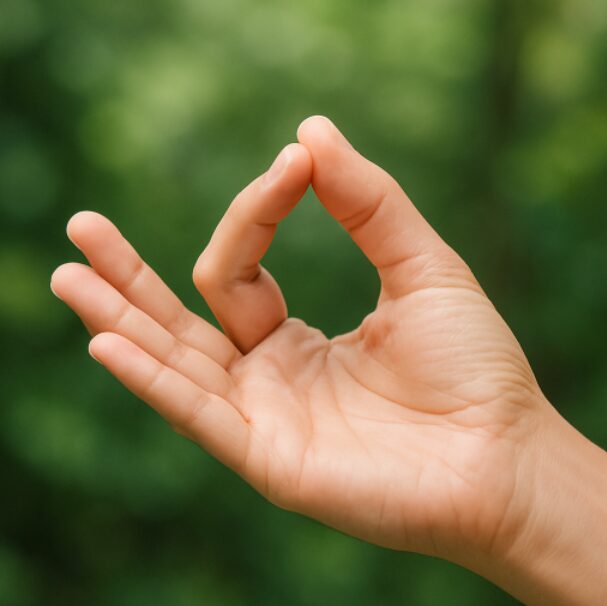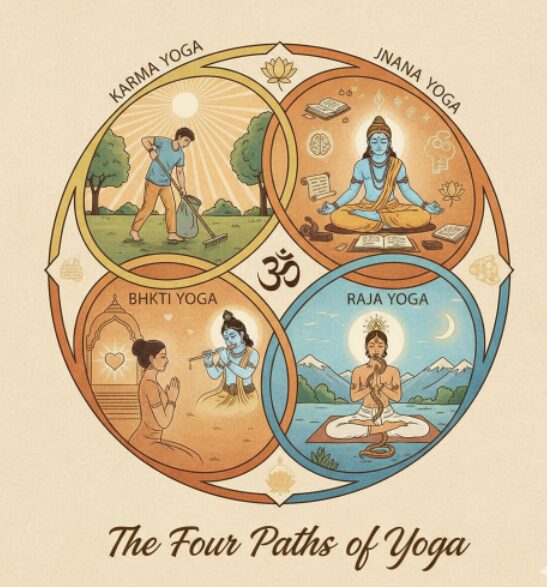Exploring the 8 Limbs of Yoga (Ashtanga) – Mastering Mind, Body and Spirit
Yoga is far more than just a set of physical exercises or a path to flexibility. It is a systematic process for accelerating the growth of a human being from his animal level to normalcy, then to super human level and ultimately to divinity. The word Ashtanga is derived from the Sanskrit “Ashta” (eight) and “Anga” (limb), referring to the Eight Limbs of Yoga outlined by the sage Patanjali in the Yoga Sutras.
These eight limbs—ranging from ethical principles to deep meditative absorption—form a step-by-step guide to achieving inner peace and ultimately, self-realization.
Let’s explore each of the eight limbs, understand their traditional meanings, and examine how they can be applied in the modern world.

1. Yama – Ethical Disciplines
Yama is the first limb of the Ashtanga Yoga path and serves as the ethical foundation for all yogic practice. It outlines five moral principles that guide our behaviour toward others and the world. These disciplines are not just about abstaining from harmful actions—they are active commitments to live consciously and compassionately.
The Five Yamas and Their Deeper Significance:
- Ahimsa (Non-violence) – Ahimsa means more than just refraining from physical harm. It includes avoiding harm in speech, thought, and intention. It calls for compassion and respect for all beings—including oneself.
Modern Application:
- Adopting a plant-based diet or cruelty-free lifestyle.
- Creating boundaries in toxic relationships rather than retaliating with anger.
- Satya (Truthfulness) – Satya encourages truth in our words, thoughts, and actions.
Modern Application:
- Speaking honestly at work while being mindful of others’ feelings.
- Living authentically—aligning your actions with your values.
- Asteya (Non-stealing) – Asteya goes beyond refraining from theft; it includes not taking credit for others’ work, not wasting others’ time, and not crave what others have.
Modern Application:
- Respecting intellectual property.
- Being punctual and valuing others’ time.
- Practicing contentment instead of constantly comparing yourself to others.
- Brahmacharya (Moderation or Right Use of Energy) – Traditionally seen as celibacy, Brahmacharya in modern terms means using your energy wisely. It’s about restraint, balance, and mindful living—especially regarding desires and impulses.
Modern Application:
- Avoiding overindulgence in food, sex, media, or spending.
- Cultivating presence and intention in relationships.
- Prioritizing self-care over burnout or overcommitment.
- Aparigraha (Non-attachment) – Aparigraha teaches us to let go—of materialism, attachments, expectations, and outcomes. It encourages simplicity, generosity, and freedom from the fear of loss.
Modern Application:
- Embracing a minimalist lifestyle.
- Decluttering your home and digital life.
2. Niyama – Personal Observances
Niyamas are inner disciplines and observances that help cultivate self-awareness, discipline, and inner peace. While Yamas regulate our relationship with the world, Niyamas focus on our relationship with ourselves.
The Five Niyamas and Their Modern Relevance:
- Shaucha (Purity) – Cleanliness of body, mind, surroundings, and relationships.
Modern Application:
- Eating whole, unprocessed foods.
- Practicing mental hygiene—avoiding gossip, negativity, and toxic media.
- Keeping your home and workspace organized and clutter-free.
- Santosha (Contentment) – Deep, unconditional acceptance of what is—without dependence on external validation or possessions.
Modern Application:
- Practicing gratitude daily.
- Releasing comparison culture on social media.
- Finding peace in the present instead of chasing perfection.
- Tapas (Discipline or Burning Effort) – The inner fire of willpower, dedication, and transformation. Tapas is about pushing through resistance to grow spiritually and mentally.
Modern Application:
- Committing to a regular yoga, workout, or meditation routine.
- Waking up early or setting healthy boundaries even when it’s difficult.
- Svadhyaya (Self-Study or Study of Scriptures) – A practice of both introspection and spiritual study. Knowing yourself through inner reflection and sacred texts.
Modern Application:
- Journaling about emotions, habits, and reactions.
- Reading wisdom literature, personal development books, or spiritual texts.
- Ishvarapranidhana (Surrender to the Divine) – Letting go of ego and control, and trusting a higher power, the universe, or the flow of life.
Modern Application:
- Trusting outcomes rather than obsessing over control.
- Praying or engaging in spiritual rituals that connect you to something greater.
3. Asana – Physical Postures
The word Asana comes from the Sanskrit root āsan meaning “to sit” or “posture.”
Originally, asana was designed to prepare the body for meditation by cultivating physical stillness, strength, and endurance. Today, asana is the most widely recognized and practiced limb of yoga, often serving as the gateway to the broader yogic path.
Traditional Approach:
-
-
- Early yogic texts like the Hatha Yoga Pradipika described just a handful of seated postures, mainly aimed at aiding meditation.
- The primary purpose was spiritual discipline, inner awareness, and preparation for pranayama and meditation.
- Focused on stillness and energy control, not physical fitness.
-
Modern Evolution:
-
-
-
- Modern yoga includes hundreds of asanas, emphasizing a full-body approach to strength, flexibility, balance, and coordination.
- Dynamic styles like Vinyasa, Power Yoga, and Ashtanga Vinyasa emerged in the 20th century, combining breath and movement.
-
-
4. Pranayama – Breath Control
Pranayama is the yogic practice of breath regulation. The term comes from the Sanskrit roots:
-
-
- “Prana” – the life force or vital energy that animates the body and mind.
- “Ayama” – to extend, regulate, or control.
-
So, Pranayama means the extension and control of life force through the breath.
It’s not just a breathing exercise—it is the conscious use of breath to harmonize the body’s energy systems, calm the mind, and prepare for deeper states of awareness.
Key Techniques:
-
-
- Nadi Shodhana (Alternate Nostril Breathing): Balances the nervous system.
- Kapalabhati (Skull-shining Breath): Energizing, detoxifying breath.
- Ujjayi (Victorious Breath): Often used in vinyasa yoga to focus the mind.
-
Modern Applications:
-
-
- Used in stress management, meditation, sports, and even therapy.
- A powerful tool in managing anxiety, enhancing focus, and improving respiratory health.
-
5. Pratyahara – Withdrawal of the Senses
Pratyahara comes from two Sanskrit roots:
-
-
- “Prati” – against or away
- “Ahara” – food or anything taken in (especially sensory input)
-
Thus, Pratyahara means “withdrawal from what is taken in”—specifically, the external sensory stimuli. It’s the process of turning the senses inward to cultivate inner awareness, a bridge between the outer and inner practices of yoga.
Traditional Context:
In classical yogic teachings, Pratyahara is the turning point—the transitional stage that shifts yoga from the external practices (Yama, Niyama, Asana, Pranayama) to the inner limbs (Dharana, Dhyana, Samadhi).
Modern Applications:
-
-
- Practicing digital detox or unplugging from constant notifications.
- Creating quiet time for introspection and reducing sensory overload.
-
6. Dharana – Concentration
Dharana comes from the Sanskrit root “Dhri”, which means to hold, maintain, or keep steady. It refers to the practice of holding the mind’s attention on a single point—whether an object, thought, sound, or sensation.
In the progression of the eight limbs, Dharana is the first step in the internal path of meditation, following Pratyahara (withdrawal from sensory input). If Pratyahara is about turning inward, Dharana is about focusing once you’re there.
Traditional Practice:
It involves sustained, effortless concentration on one object—such as:
-
-
- A candle flame (Trataka)
- The breath
- A mantra (e.g., Om)
- A visual symbol (e.g., yantra or deity image)
- The chakra centers or inner body awareness
-
Modern Applications:
-
-
- Practiced through mindfulness meditation, creative flow, or Focus-Enhancing exercises.
- Helps in reducing distractions and improving productivity and mental clarity.
-
7. Dhyana – Meditation
Dhyana comes from the Sanskrit root “dhyai”, meaning to contemplate or meditate.
It refers to a continuous, unbroken flow of meditative awareness—a state where the mind becomes deeply absorbed in the object of focus, without effort, distraction, or interruption.
Where Dharana is like holding a magnifying glass over one point, Dhyana is the experience of becoming completely immersed in that point—no effort is needed because awareness flows naturally.
Traditional Understanding:
In yogic philosophy, Dhyana is not about analyzing thoughts or trying to quiet the mind through force. Instead, it is about creating the conditions for silence, where the mind naturally settles into stillness and pure awareness emerges.
Dhyana prepares the mind for Samadhi (the final limb), where the meditator, the object of meditation, and the process itself dissolve into unity.
Modern Applications:
-
-
- Regular meditation improves emotional balance, neuroplasticity, and well-being.
- Forms like mindfulness, loving-kindness, or transcendental meditation are widely practiced.
-
8. Samadhi – Liberation or Enlightenment
Samadhi is a Sanskrit term meaning “absorption”, “union”, or “putting together.”
In yogic philosophy, it represents the culmination of the entire yogic path—a state of oneness with the Self, the Divine, or pure consciousness. It is the point at which the individual ego dissolves, and the practitioner becomes fully absorbed in the object of meditation, transcending duality.
It is often described as a state of blissful liberation (moksha) and inner freedom.
Types or Stages of Samadhi (According to Patanjali):
|
Type |
Description |
|
Savikalpa Samadhi |
Samadhi with form or thought; there is still an object of meditation or awareness. The practitioner experiences deep peace, but subtle duality remains. |
|
Nirvikalpa Samadhi |
Samadhi without thought or form; pure consciousness. The ego dissolves, and there is no sense of “I” or “other.” A non-dual, timeless state. |
|
Sahaja Samadhi |
Spontaneous, natural Samadhi integrated into everyday life. The yogi lives in the world but is no longer of it—awake in unity, even during action. |
Modern Interpretation:
-
-
- For most modern practitioners, Samadhi may not occur as a permanent state, but rather in brief glimpses—moments of – Deep inner stillness, Transcendental joy, Timeless flow, Ego-less awareness, Spiritual insight or unity with nature/life.
-
- For most, glimpses of Samadhi come as moments of flow in art, music, or athletics, or even Psychedelic or near-death experiences
-
Conclusion: Yoga Beyond the Mat
The Eight Limbs of Yoga offer a rich and timeless guide for living a balanced, meaningful life. While asana brings us to the mat, the remaining limbs invite us to explore ethics, discipline, conscious breathing, focus, and meditation—all of which have become more relevant in the modern world of today.
Whether you’re a beginner or an advanced practitioner, integrating even a few of these limbs can lead to profound personal transformation. In today’s world filled with distractions and disconnection, the wisdom of Ashtanga Yoga reminds us to return inward—to live mindfully, ethically, and with purpose.






One Comment